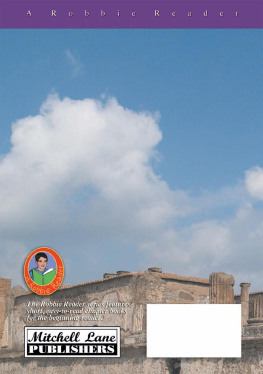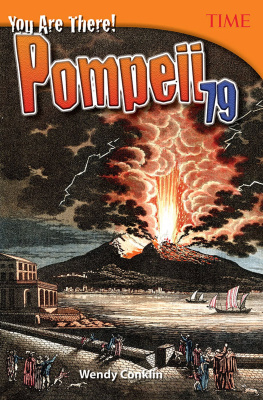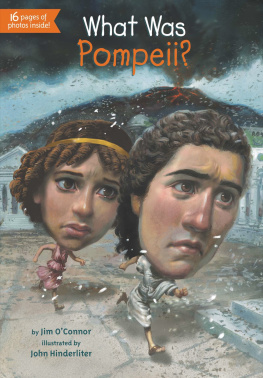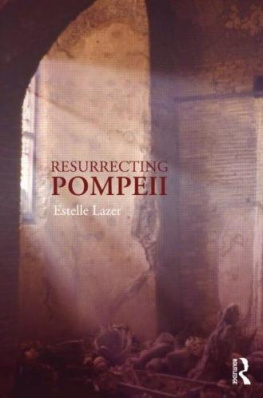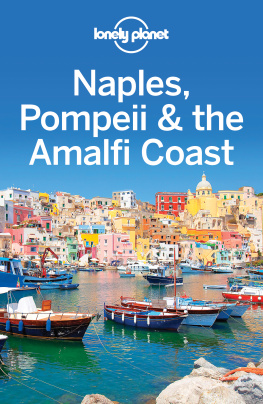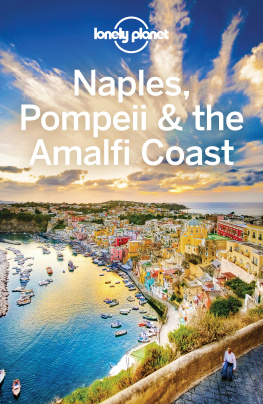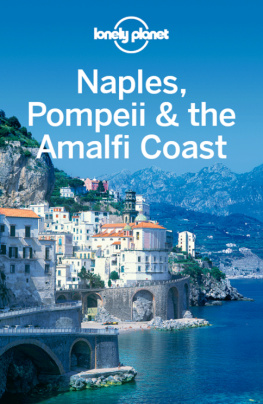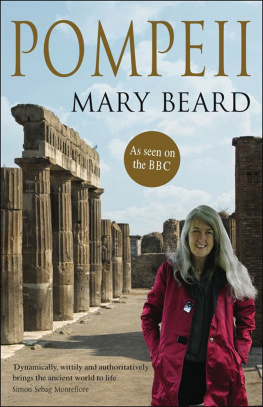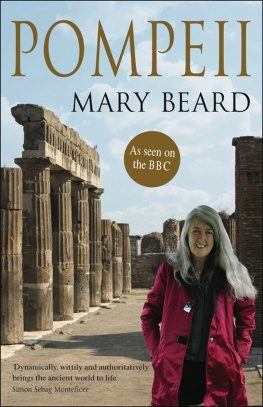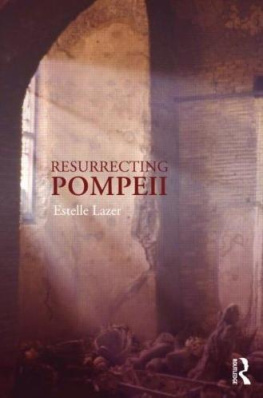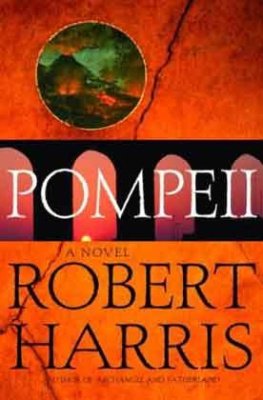Transcriber's Note:
Obvious typographical errors have been corrected. Inconsistent spelling and hyphenation in the original document have been preserved.
On page , 1854 should possibly be 1845.
On page , the page number referenced is missing on the first Chapter XXXV citation.
On page , the pages listed as pp 226-223 are possibly a typo.
On page , \B and \F represent VB and VF ligatures.
POMPEII
ITS LIFE AND ART
MACMILLAN Logo
PLATE I.VIEW OF THE FORUM, LOOKING TOWARD VESUVIUS
POMPEII
ITS LIFE AND ART
BY
AUGUST MAU
GERMAN ARCHAEOLOGICAL INSTITUTE IN ROME
Translated into English
BY FRANCIS W. KELSEY
UNIVERSITY OF MICHIGAN
WITH NUMEROUS ILLUSTRATIONS FROM ORIGINAL
DRAWINGS AND PHOTOGRAPHS
NEW EDITION, REVISED AND CORRECTED
New York
THE MACMILLAN COMPANY
LONDON: MACMILLAN & CO., Ltd.
1902
All rights reserved
Copyright, 1899, 1902,
By FRANCIS W. KELSEY.
First Edition, October, 1899.
New Revised Edition, with additions, November, 1902.
Norwood Press
J. S. Cushing & Co.Berwick & Smith
Norwood Mass. U.S.A.
PREFACE TO THE FIRST EDITION
For twenty-five years Professor Mau has devoted himself to the study of Pompeii, spending his summers among the ruins and his winters in Rome, working up the new material. He holds a unique place among the scholars who have given attention to Pompeian antiquities, and his contributions to the literature of the subject have been numerous in both German and Italian. The present volume, however, is not a translation of one previously issued, but a new work first published in English, the liberality of the publishers having made it possible to secure assistance for the preparation of certain restorations and other drawings which Professor Mau desired to have made as illustrating his interpretation of the ruins.
In one respect there is an essential difference between the remains of Pompeii and those of the large and famous cities of antiquity, as Rome or Athens, which have associated with them the familiar names of historical characters. Mars' Hill is clothed with human interest, if for no other reason, because of its relation to the work of the Apostle Paul; while the Roman Forum and the Palatine, barren as they seem to-day, teem with life as there rise before the mind's eye the scenes presented in the pages of classical writers. But the Campanian city played an unimportant part in contemporary history; the name of not a single great Pompeian is recorded. The ruins, deprived of the interest arising from historical associations, must be interpreted with little help from literary sources, and repeopled with aggregate rather than individual life.
A few Pompeians, whose features have survived in herms or statues and whose names are known from the inscriptions, seem near to us,such are Caecilius Jucundus and the generous priestess Eumachia; but the characters most commonly associated with the city are those of fiction. Here, in a greater degree than in most places, the work of reconstruction involves the handling of countless bits of evidence, which, when viewed by themselves, often seem too minute to be of importance; the blending of these into a complete and faithful picture is a task of infinite painstaking, the difficulty of which will best be appreciated by one who has worked in this field.
It was at first proposed to place at the end of the book a series of bibliographical notes on the different chapters, giving references to the more important treatises and articles dealing with the matters presented. But on fuller consideration it seemed unnecessary thus to add to the bulk of the volume; those who are interested in the study of a particular building or aspect of Pompeian culture will naturally turn to the Pompeianarum antiquitatum historia, the reports in the Notizie degli Scavi, the reports and articles by Professor Mau in the Roman Mittheilungen of the German Archaeological Institute, the Overbeck-Mau Pompeji, the Studies by Mau and by Nissen, the commemorative volume issued in 1879 under the title Pompei e la regione sotterrata dal Vesuvio, the catalogues of the paintings by Helbig and Sogliano, together with Mau's Geschichte der decorativen Wandmalerei in Pompeji, H. von Rohden's Terracotten von Pompeji, and the older illustrated works, as well as the beautiful volume, Pompeji vor der Zerstoerung, published in 1897 by Weichardt.
The titles of more than five hundred books and pamphlets relating to Pompeii are given in Furchheim's Bibliografia di Pompei (second edition, Naples, 1891). To this list should be added an elaborate work on the temple of Isis, Aedis Isidis Pompeiana, which is soon to appear. The copperplates for the engravings were prepared at the expense of the old Accademia ercolanese, but only the first section of the work was published; the plates, fortunately, have been preserved without injury, and the publication has at last been undertaken by Professor Sogliano.
Professor Mau wishes to make grateful acknowledgment of obligation to Messrs. C. Bazzani, R. Koldewey, G. Randanini, and G. Tognetti for kind assistance in making ready for the engraver the drawings presenting restorations of buildings; to the authorities of the German Archaeological Institute for freely granting the use of a number of drawings in its collection; and to the photographer, Giacomo Brogi of Florence, for placing his collection of photographs at the author's disposal and making special prints for the use of the engraver. In addition to the photographs obtained from Brogi, a small number were furnished for the volume by the translator, and a few were derived from other sources.
The restorations are not fanciful. They were made with the help of careful measurements and of computations based upon the existing remains; occasionally also evidence derived from reliefs and wall paintings was utilized. Uncertain details are generally omitted.
It is due to Professor Mau to say that in preparing his manuscript for English readers I have, with his permission, made some changes. The order of presentation has occasionally been altered. In several chapters the German manuscript has been abridged, while in others, containing points in regard to which English readers might desire a somewhat fuller statement, I have made slight additions. The preparation of the English form of the volume, undertaken for reasons of friendship, has been less a task than a pleasure.
FRANCIS W. KELSEY.
Ann Arbor, Michigan ,
October 25, 1899.
PREFACE TO THE SECOND EDITION
The author and the translator unite in expressing their deep appreciation of the kind reception accorded to the first edition of this book.
The second edition has been revised on the spot. Besides minor additions, it has been enlarged by a chapter on the recently discovered temple of Venus Pompeiana, and a Bibliographical Appendix; prepared in response to requests from various quarters. Among the new illustrations in the text are a restoration of the temple of Vespasian and a reproduction of the bronze youth found in 1900, besides the Alexandria patera and one of the skeleton cups from the Boscoreale treasure; in are presented two additional paintings from the house of the Vettii.
The translator is alone responsible for , which was prepared for the first edition at Professor Mau's request, at a time when he was pressed with other work; for the paragraphs in regard to the treasure of Boscoreale, and for one-half of the references in the Bibliographical Appendix.



